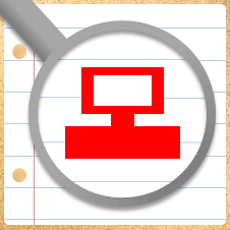
Exploring Data
Overview
Through stimulating activities, students learn the vocabulary associated with databases including an introduction to handling CSV files. Students perform real data collection and enter details into the live database. Moving-on, student design database tables for a given purpose and learn about suitable fieldnames and data types for storing data. They then build a database table from first principles using designs, and learn how to import data from external files. After watching an informative video tutorial on creating queries, students carry out increasingly challenging practical exercises. Student then move onto consider the function and suitability of different input and output devices, researching real world costs in the process. Finally, students complete the unit, integrating their learning from the modelling unit to produce a user guide for their database and spreadsheet models for assessment.
Lesson by lesson key content
Lesson
number
|
Indicative content
|
Homework
|
| 1 |
Finding errors in a paper based database; deciding on errors in a database and correcting them.
|
None for this lesson. |
| 2 |
Collect and enter data from a data collection form; design database tables for a given purpose; specifying data types for database designs.
|
Designing database tables. |
| 3 |
Building database tables and forms; building a table based on a text file.
|
Database queries worksheet. |
| 4 |
Querying a paper based database; querying a large electronic database; building your own database queries according to a user's specification.
|
None for this lesson. |
| 5 |
Identifying the purpose of different input and output devices; choosing input and output devices for different scenarios; identify the costs of different components and devices.
|
None for this lesson. |
| 6 |
Complete the mission : Extreme Power assessment.
|
Bring an example of a user guide to the next lesson. |
| 7 |
Working out the common features of different user guides; produce a user guide.
|
None for this lesson. |
Computing curriculum content
- Make appropriate use of data structures (for example, lists, tables or arrays);
- Understand the hardware and software components that make up computer systems;
- Understand how data of various types (including text, sounds and pictures) can be represented;
- Undertake creative projects that involve selecting, using, and combining multiple applications, to achieve challenging goals, including collecting and analysing data and meeting the needs of known users.
Literacy curriculum content
- Learning new vocabulary, relating it explicitly to known vocabulary and understanding it with the help of context;
- Writing for a wide range of purposes and audiences, including notes;
- Paying attention to accurate grammar, punctuation and spelling;
- Drawing on new vocabulary and grammatical constructions from their reading and listening, and using these consciously in their writing.
Numeracy curriculum content
- Develop their use of formal mathematical knowledge to interpret and solve problems, including in financial mathematics;
- Use the symbols: =, ≠, <, >, ≤, ≥.